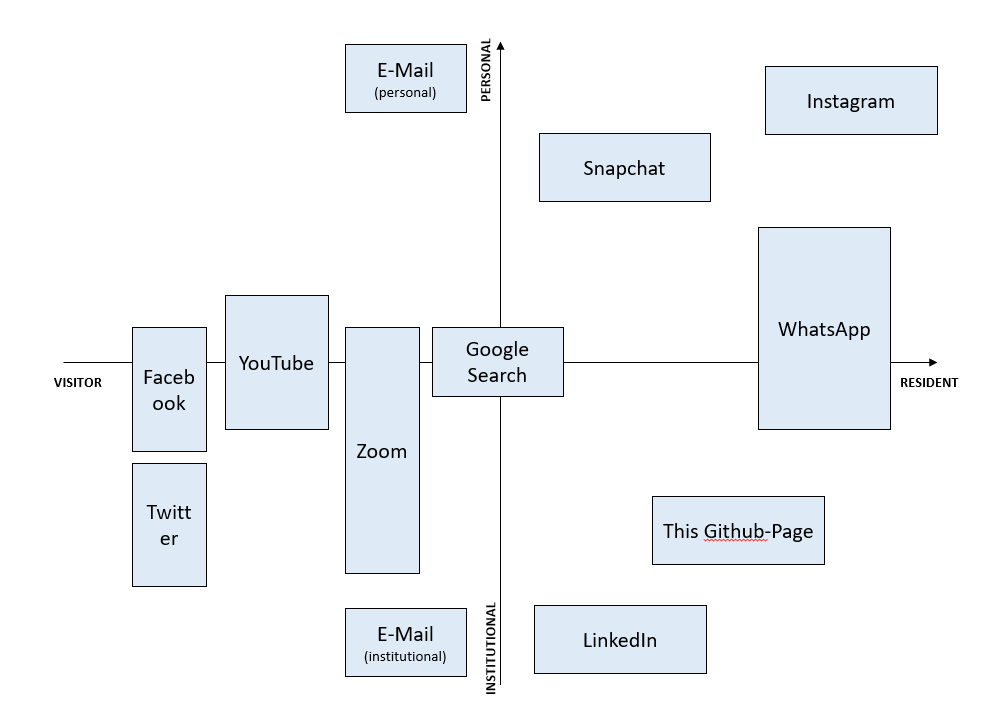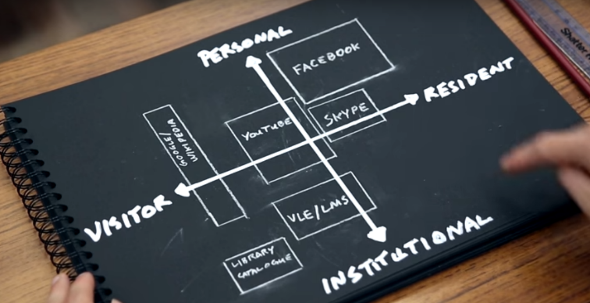CS220AU-DP-2022
Foundation: Generations & VR-Map
Welcome to this first blog post!
In this first post I describe my first steps into the topic of Digital Identities & Existential Risks.
This is partly based on the course content from our first session in the seminar. Hopefully, this will help you to understand why it is important to deal with this topic.
Generations
This video describes the different generations.
Generations can be formed on the basis of the so-called generational location. This means that “all members of a generation share a similar collective experience”.
In the following list, the years given are only considered as a guideline, as it is more about the common experience than about concrete age periods.
The following 5 generations currently exist:
- “The Silent Generation”: who were born before 1945
- Worldwars, great depression, etc.
- “Always respect your elders”
- Baby Boomers: born between 1946 and 1964
- Vietnam war, cold war, civil rights movement, moon landing, …
- Generation X: born between 1965 and 1979
- Use of computers, musicvideos
- Millennials / Gen Y: born between 1980 and 1995
- Technological improvements
- Centennials / Gen Z: born from 1996 to the present
- Collaborations, digital devices
- Most similarities with millennials
In addition, you should always keep in mind that communication has changed a lot. Almost everything online happens simultaneously.
It can also be said that the topic of digital identities, as the name already suggests, revolves around digital technology. If you compare the current generation with all previous ones, it is noticeable that the current one is the only one that naturally grew up with digital technologies. Everyone else is not a “native speaker” and must first learn how to use such technologies as a “second language”. But even those who have grown up with such technologies should take a closer look at their digital identities, as they can achieve a lot, but also “destroy” them.
Visitor Resident Concept (VR Map)
To provide a framework for this elusive concept of digital identities, David White developed the so-called Visitor-Resident Concept. This represents a basic idea for understanding digital identities. He created a very helpful video, to explain his concept further.
The VR concept or VR map is a coordinate system with two axes: on the horizontal axis, a distinction is made between visitor and resident, and on the vertical between personal and institutional or professional.
Let us first look at the distinction on the horizontal axis:
- visitors: collection of tools, getting a job done, “toolbox”, use it and put it back
- search information, use information, go offline again
- no social trace of ourselves
- e.g. booking a hotel
- residents: series of spaces / places
- to be present
- engagement, leaves social trace after going offline
- e.g. photos, blogposts -> linked to our identity
The distinction at the vertical level is relatively intuitive, as simply distinguishing the purpose of the benefit. Is the service/technology used more in a private setting or for professional purposes or in an institutional context.
Example
To show you the whole concept a little more practically, I have created my personal VR map here.
To do this, I first considered which digital services I am using and then entered them into the model. This is the outcome:

Whatsapp, for example, is on the far right for me, i.e. at the end of the resident area, because I leave a trace of myself in the chats here in a certain way. I use it mainly for personal purposes, but also occasionally for professional purposes, hence the classification in both areas. I only use LinkedIn for professional purposes, hence the classification at the bottom. Since I also present myself on this platform - not as strongly as on Instagram, but still noticeable - I place LinkedIn in the resident sector.
Attention: There is no right or wrong!! This is just my personal map - yours could look completely different! :)
David White also mentions that the services usually end up either in the lower left or upper right sector, e.g. here:

Feel free to think about your own personal VR map!
With the help of this newly acquired knowledge, I would like to explore the topic of existential risks in a next step and understand it more precisely.
Navigation
Back to the Mainpage!
Take me to the next post about Digital Identities!